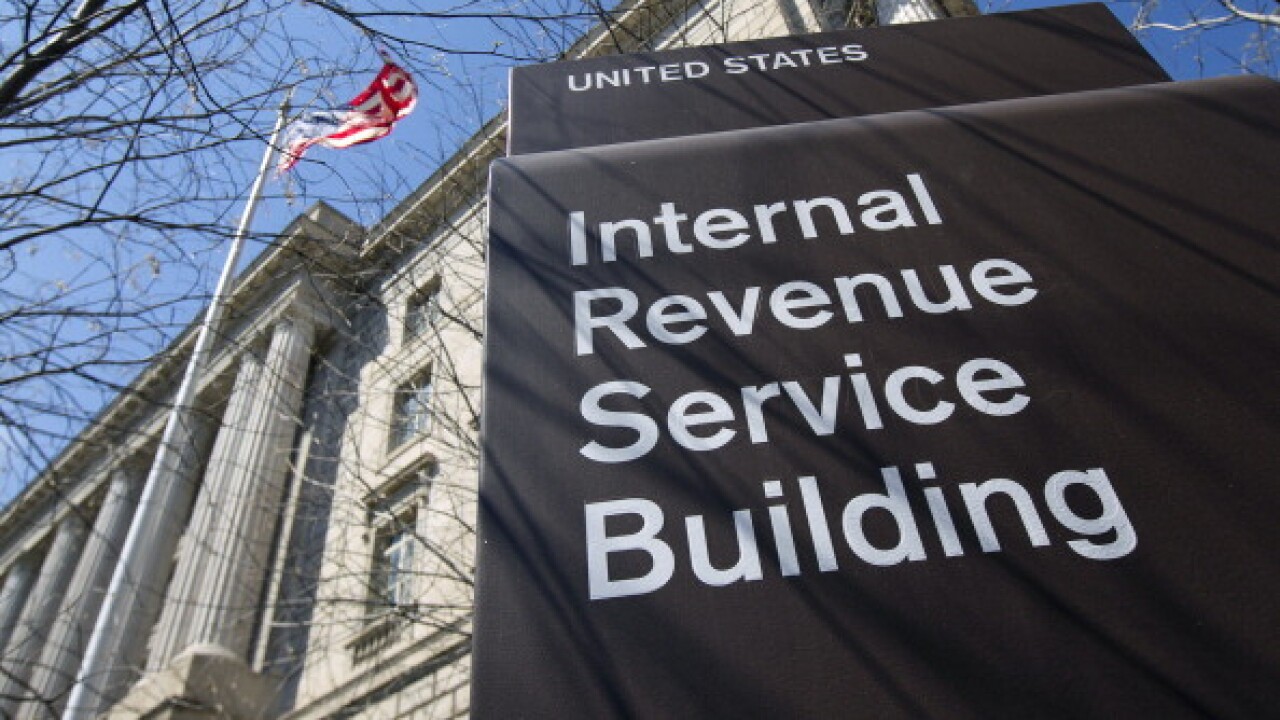by George G. Jones and Mark A. Luscombe
Thanks to the Job Creation and Worker Assistance Act of 2002, many clients and practitioners have many new strategies to consider. One that requires immediate attention is the treatment of net operating losses.
Should NOLs generated during the current economic slowdown be carried back for two or five years? Or should they not be carried back at all in favor of a 20-year carryforward, betting on a future of increasing business success (and rising taxable income)? For many businesses, the five-year carryback period means a quick injection of cash.
For NOLs generated in tax years ending in 2001 or 2002, the new law provides a special temporary carryback period of five years instead of the normal two or three, unless waived in favor of that normal period. Taxable income that is realized in the years prior to the slowdown (1996 through 1998) can be offset retroactively by 2001 and 2002 NOLs and almost instant cash can be realized in the form of a quick refund using Form 1139 or 1045. However, for some businesses, this may not be the best move.
Basic rules
A taxpayer has an NOL if certain deductions exceed gross income. This NOL may be carried back or carried over to another tax year to the extent that the loss was incurred in a trade or business, from a casualty loss, or from a loss on the sale of depreciable property or real estate used in a trade or business.
In computing a NOL for an individual, non-business deductions are allowed only to the extent of non-business income, including the excess of non-business capital gains over non-business capital losses. The taxpayer must add back any excess non-business deductions to taxable income.
NOLs must be reduced by taxable income for each year to which the NOL has already been carried (the intervening years) to determine the unused portion of NOL that is available for current tax year.
The impact of NOLs on alternative minimum tax liability must not be overlooked. Split elections are not permitted. For example, a taxpayer may not carry forward regular NOLs and carry back alternative minimum tax NOLs. Under the new law, the alternative tax NOL deduction based on NOLs generated or taken as carryforwards in tax years ending in 2001 and 2002 is limited to 100 percent of AMT income instead of 90 percent.
Attention also should be given to the interplay between the temporary 2001 and 2002 NOL rules and NOLs incurred prior to Jan. 1, 2001, which are being carried forward. If a pre-2001 NOL is carried forward, it will not increase the size of the new 2001 or 2002 NOL that can be carried back to 1996-1998. It can only be used to increase to size of post-2001 or 2002 NOL carryforwards.
Factors to consider
Although an election not to take an extended carryback period can mean postponement of the NOL deduction when the offsetting income exists in those carryback years, eliminating or shortening a carryback period can be the right decision. A number of factors should be considered:
The rate of tax in a carryback year may be low when compared to the anticipated marginal tax rate for the taxpayer in a carryforward year. However, a realistic appraisal of the future income potential of a client’s business should be made. If the business already has had a string of losses due to business operations, future prospects may not be rosy enough to warrant a NOL carryforward decision.
A carryback NOL may have a negative effect on deductions, exemptions and credits that may be limited by taxable or adjusted gross income. If the taxpayer had deductions limited to the amount of taxable income or adjusted gross income in a tax year to which an NOL is carried, the taxpayer must re-compute the affected deductions. Nonrefundable credits also can be lost if there is insufficient taxable income left to absorb them.
A carryback may have a positive effect on a taxpayer’s ability to claim other, income-sensitive tax benefits. For example, a reduction of income could reduce the taxed portion of social security benefits, and increase AGI-limited deductions, such as excludable savings bond interest, the child credit, the adoption credit, Hope and lifetime learning education credits and student loan interest deductions.
In lowering AGI, a NOL carryback could also increase deductions for medical expenses (7.5 percent AGI floor), casualty losses (10 percent floor), and certain miscellaneous itemized deductions (2 percent floor). The deduction for personal and dependency exemptions, which is phased out based on AGI, could also be helped by an NOL.
Carrybacks will not reduce the income limit for charitable contribution deductions nor depletion allowances. Carryforwards will.
A corporation that is considering a switch from C to S status should remember that C corporation carryfowards cannot be used in years in which the corporation elects S status.
Other strategies
If income tax returns for the entire carryback period show losses, the taxpayer obviously cannot carry back to those years. However, it would not be prudent for the taxpayer to affirmatively elect to waive the carryback period. By default, the taxpayer will be eligible to carry the NOL forward. If an error is later uncovered that results in taxable income in those tax years, the taxpayer would be able to carry back the NOL and offset the increase in taxable income
A carryback is not the only way to generate a relatively quick cash flow. The use of an NOL as a carryforward in the next succeeding year in which the taxpayer frees up capital by taxable sales, distributions of appreciated property, sales and leasebacks of facilities, factoring accounts receivable or restructuring debt payments, can provide cash income on which no or little tax is paid because of the NOL.
Procedures
An election out must be made by the extended due date of the return for the year in which the NOL arose. Once made, the election is irrevocable. If the taxpayer - or the IRS - later discovers an error on the return of a carryback year that would have impacted its the decision to forgo the carryback, it is too late to revoke the election.
Clients with tax-sheltered deductions are prime candidates for heightened IRS scrutiny. The possible increase in income on an audit in that potential carryback year should be factored into the carryback/carryforward decision.
In the past, the IRS has often been a stickler about following proper procedures for an election out. In one case, the election was denied because the taxpayer could offer no evidence that the claimed NOLs would not have been absorbed through the operation of the carryback period. She was not entitled to the carryforward, even though the carryback was barred by the statute of limitations.
Time on your side?
To add to the pressure surrounding this NOL carryback decision, the IRS recently announced that it will allow all taxpayers with tax years ending in 2001 or 2002 who have already filed returns until Oct. 31, 2002, to change their minds and file for a quick refund using the five-year carryback period. Taxpayers who have already filed are also being given that same grace period to switch to a two-year carryback or the 20-year carryforward period.
Since the election out of the carryback periods is not due until the due date (including extensions) for filing the return, taxpayers who have not yet filed their returns and need more time to consider the election should file for an extension. Those who have filed without making an election will automatically be deemed to carry back NOLs for the five-year period unless they filed a timely amended return.
Statute of limitations
The taxpayer bears the burden of proving the amount of the NOL even when the statute of limitations is closed for that year, as can be the case in the carryforward situation. A tax return alone is not proof of entitlement to the NOL. In addition, the IRS may recompute income for an intervening year otherwise closed under the statute of limitations to determine the amount of NOL that can be carried over from that year.
For taxpayers who are subject to the regular two- or three-year carryback period, unclaimed deductions for a carryback year isn’t an issue since they fall within the limitations period for claiming a refund for the carryback year. However, unclaimed deductions may be an issue for purposes of the new five-year carryback.
Under Rev. Rul. 81-88, taxable income for the carryback year is not reduced by the amount of an unclaimed barred deduction for purposes of determining the amount of an overpayment resulting from an NOL carryback to that year that can be refunded or credited, or the amount of the NOL deduction that is carried over.
Finally, to add to the factors that you should consider when assessing whether an unknown surprise may await your client on a future audit, the mitigation provisions should also be weighed. When a determination relating to one year affects an NOL carryover to another closed year, mitigation provisions may apply to lift the limitations bar with regard to the closed year under IRC sections 1311 and 1312.
For example, the bar was lifted by the Tax Court as it pertains to a closed year when a closing agreement raised the taxpayer’s income in an earlier year and, thereby, decreased the NOL carryover used for the other closed year.





